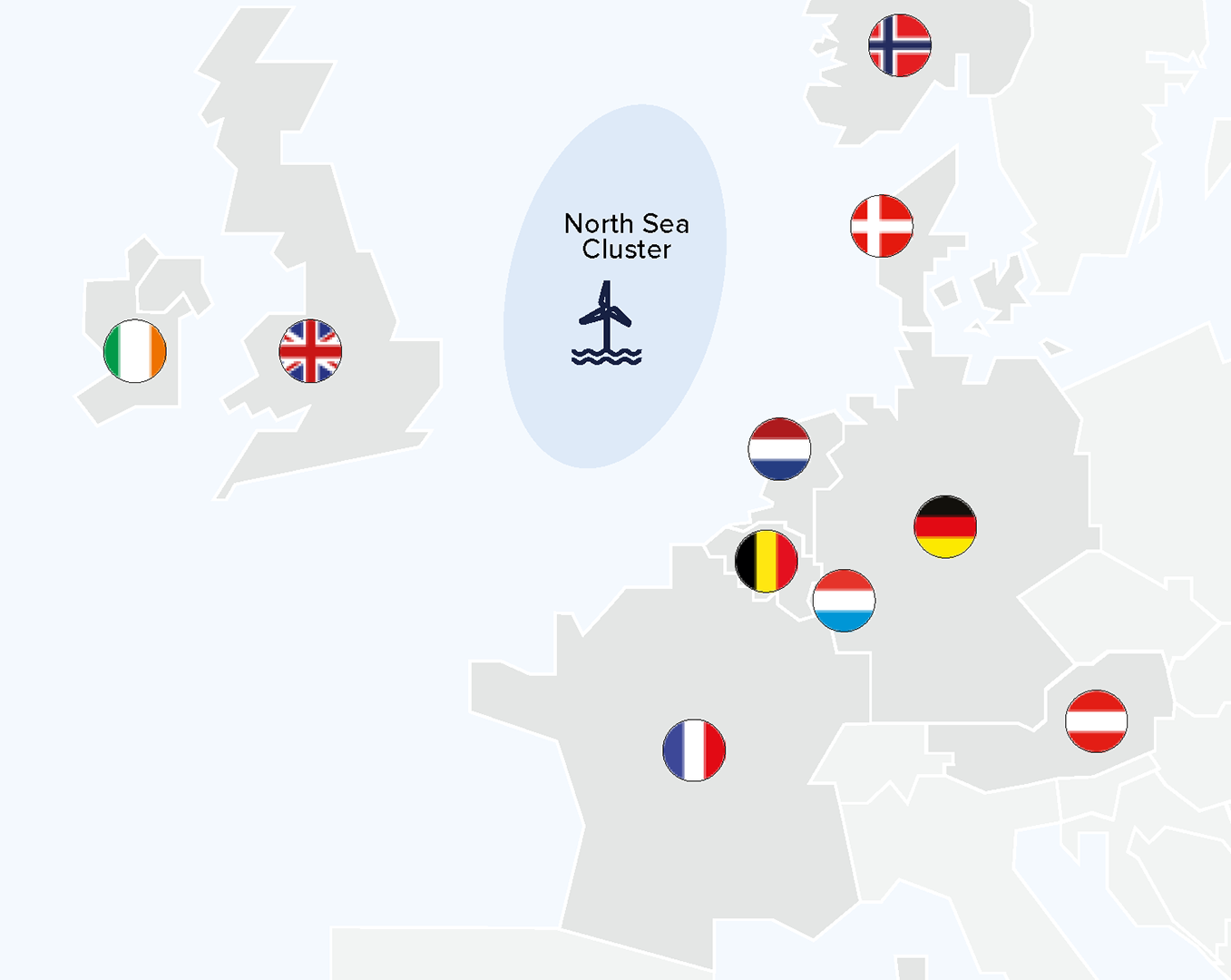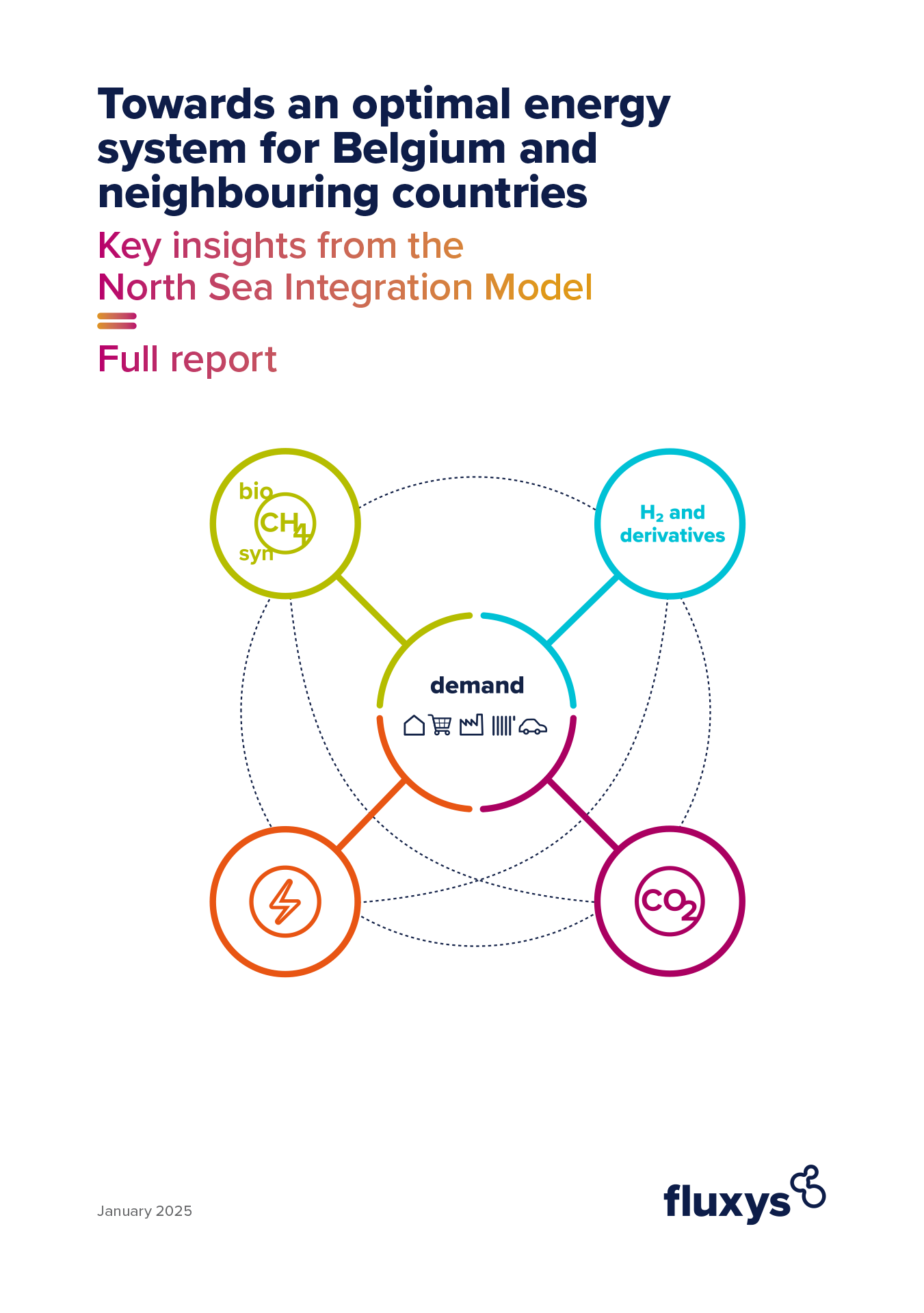Het North Sea Integration Model in het kort
Het North Sea Integration Model is het resultaat van de meerjarige samenwerking tussen Fluxys Belgium en de Universiteit van Luik (ULg) in het kader van het project INTEGRATION. Het project, dat tot doel had methodologieën te ontwikkelen om een optimaal energiesysteem voor België te ontwerpen, werd gesteund door het Belgische Energietransitiefonds.
Na afloop van het project heeft Fluxys Belgium de aanpak uitgebreid tot een model dat alle landen rond de Noordzee omvat. Met die ontwikkeling integreren we ook de verbintenis van de Noordzeelanden om van de Noordzee de grootste groene energiecentrale van Europa te maken.
Geografisch bereik
Het model bestrijkt België en Luxemburg, Nederland, Duitsland en Oostenrijk, Denemarken, Noorwegen, het Verenigd Koninkrijk en Ierland, Frankrijk en de Noordzeecluster. Die laatste omvat alle ontwikkelingen voor offshore windenergie op meer dan 40 km van de kust. Sommige landen zijn samengevoegd om het model minder complex te maken.
Hoe het model werkt: het optimum berekenen
Het model analyseert, berekent en ontwerpt een energiesysteem dat beantwoordt aan de gestelde vereisten: een systeem met netto nul uitstoot dat op elk moment aan de vraag voldoet tegen de laagste kosten. Dit vertaalt zich in capaciteit die voor elke technologie moet worden gebouwd.
Belangrijkste inzichten uit het North Sea Integration Model
- Een energiesysteem met netto nul CO₂-uitstoot in de Noordzeelanden in 2050 is realistisch en heeft zowel elektronen als molecules nodig
- Hernieuwbare elektriciteitsproductie wordt massaal uitgebouwd
- Elektrolyse-installaties stimuleren de ontplooiing van windenergie op zee
- Aanstuurbare elektriciteitsproductie is nodig in de winter
- CO₂-afvang, -vervoer en -opslag zijn essentieel om netto nul uitstoot te bereiken
- Biomethaan, biogas en biomassa zijn eveneens centrale hefbomen naar koolstofneutraliteit
- Opslag is essentieel om energie op het juiste moment te leveren
- Interconnectiecapaciteit optimaliseert het energiesysteem en is een hoeksteen voor de bevoorradingszekerheid
Downloads
We hebben de belangrijkste bevindingen van het North Sea Integration Model gebundeld in 2 publicaties. U kunt het Volledige rapport (in Engels, PDF 8,8MB) of een Executive summary (PDF 2MB) bekijken en downloaden.



